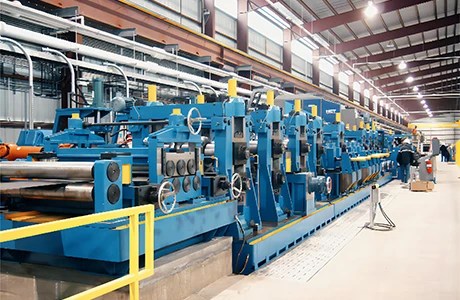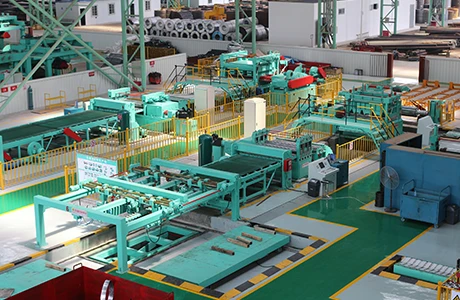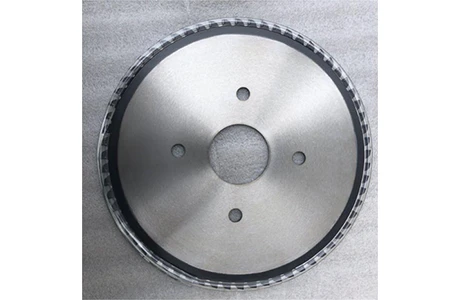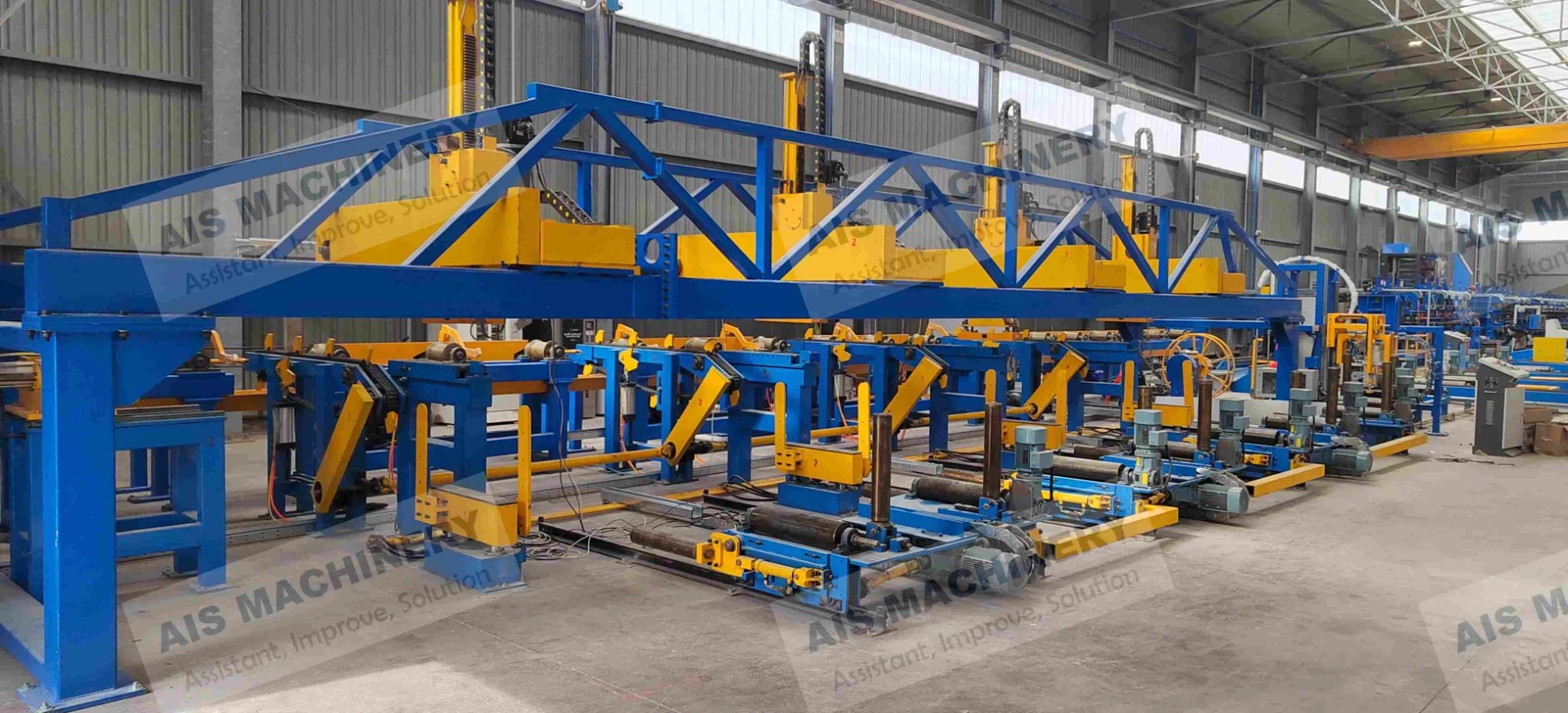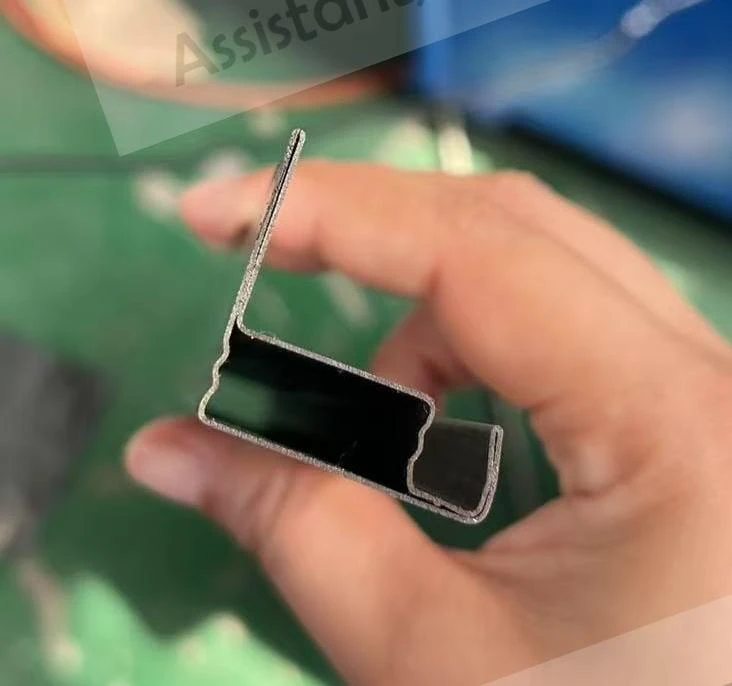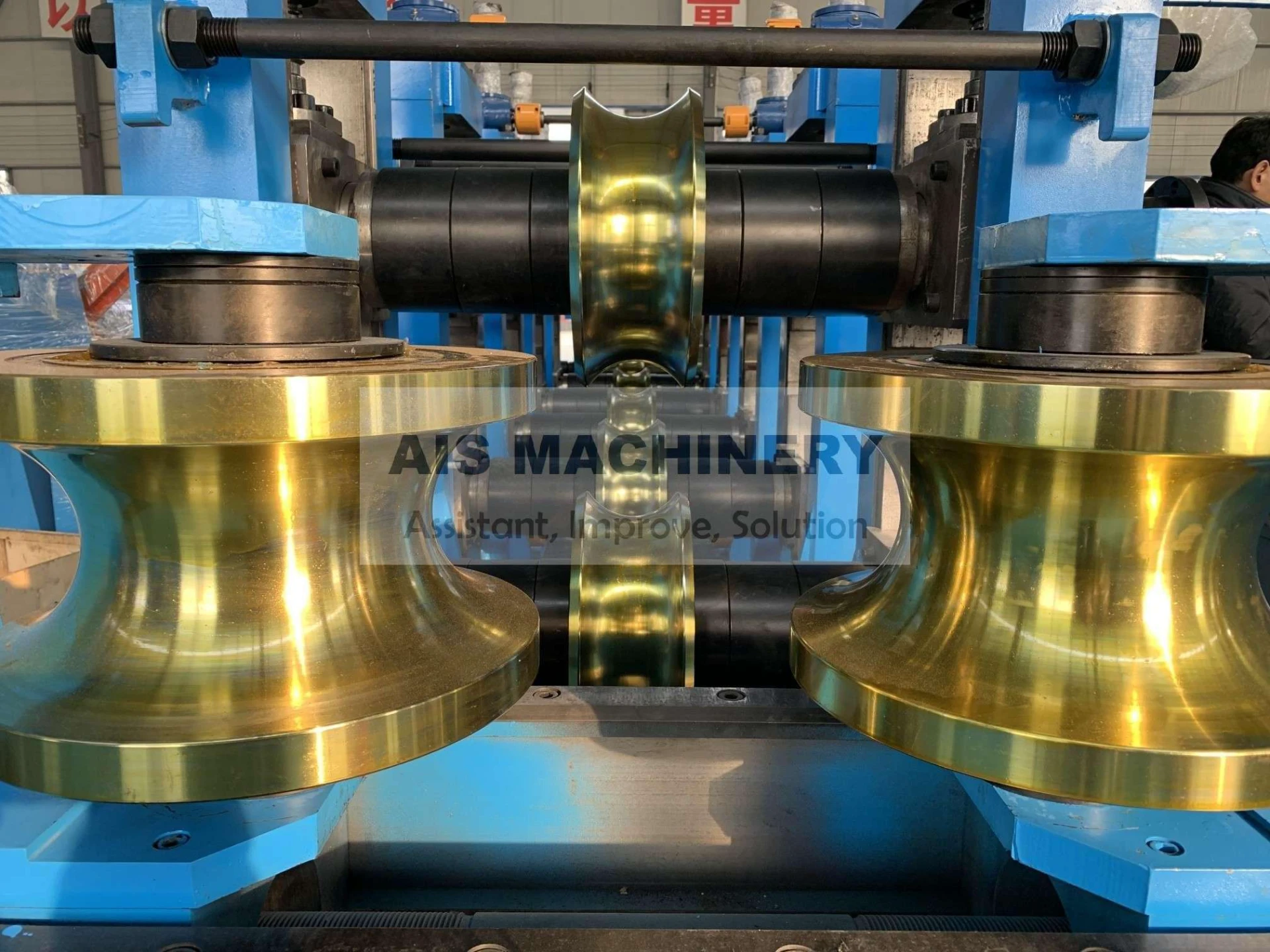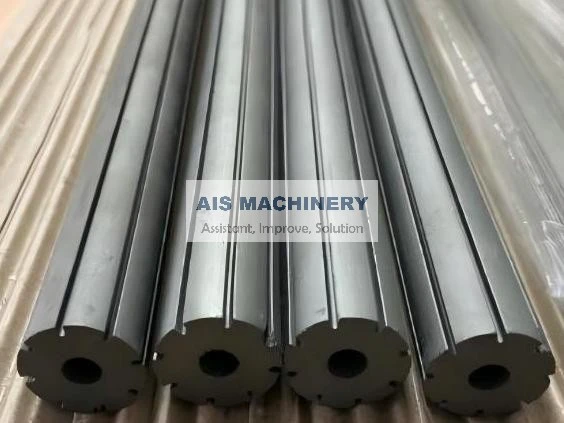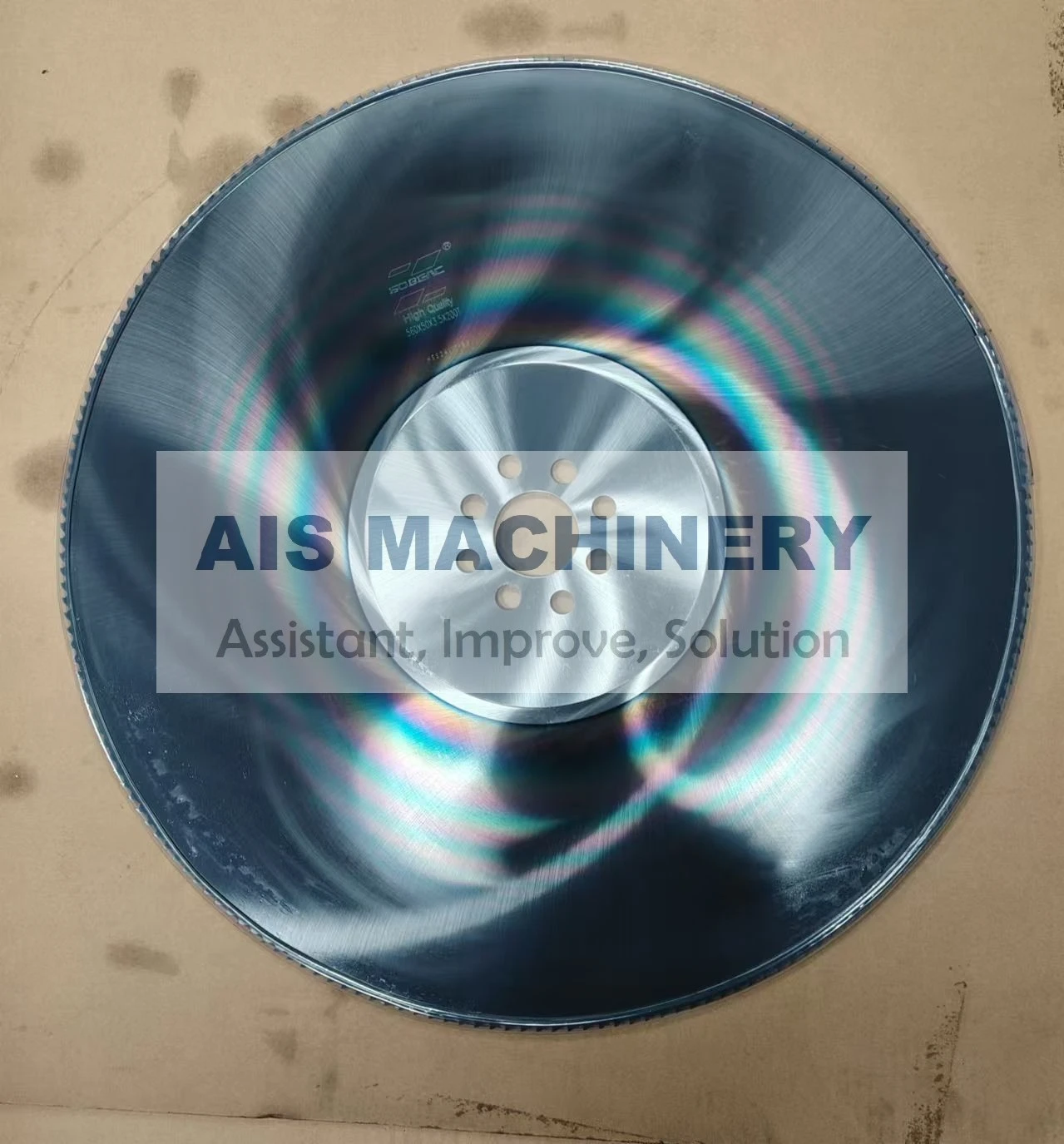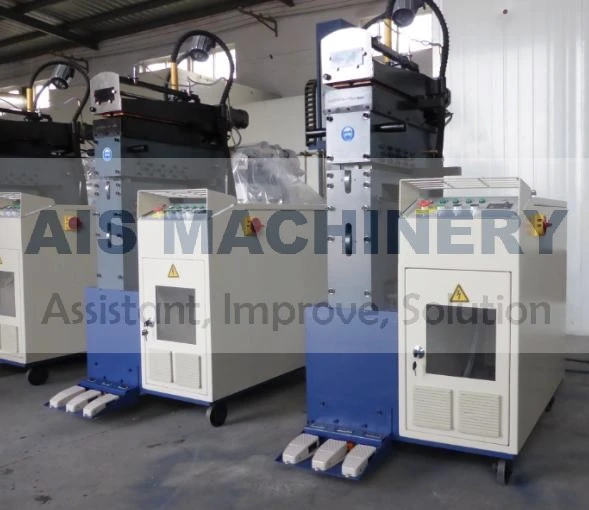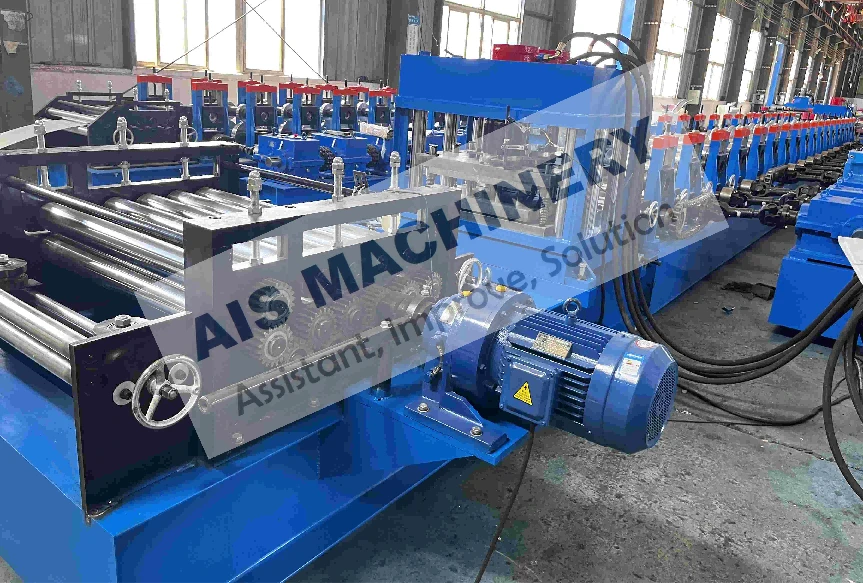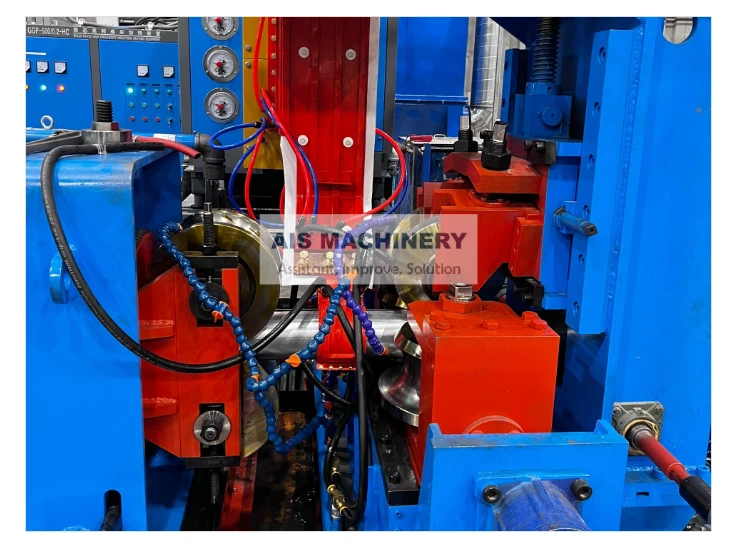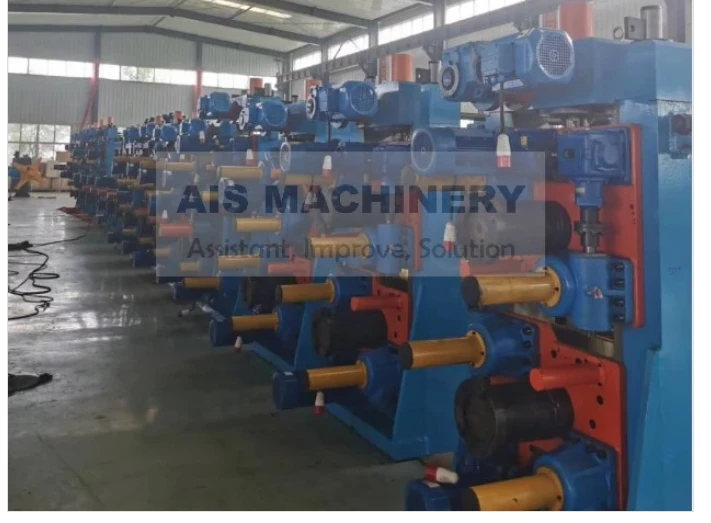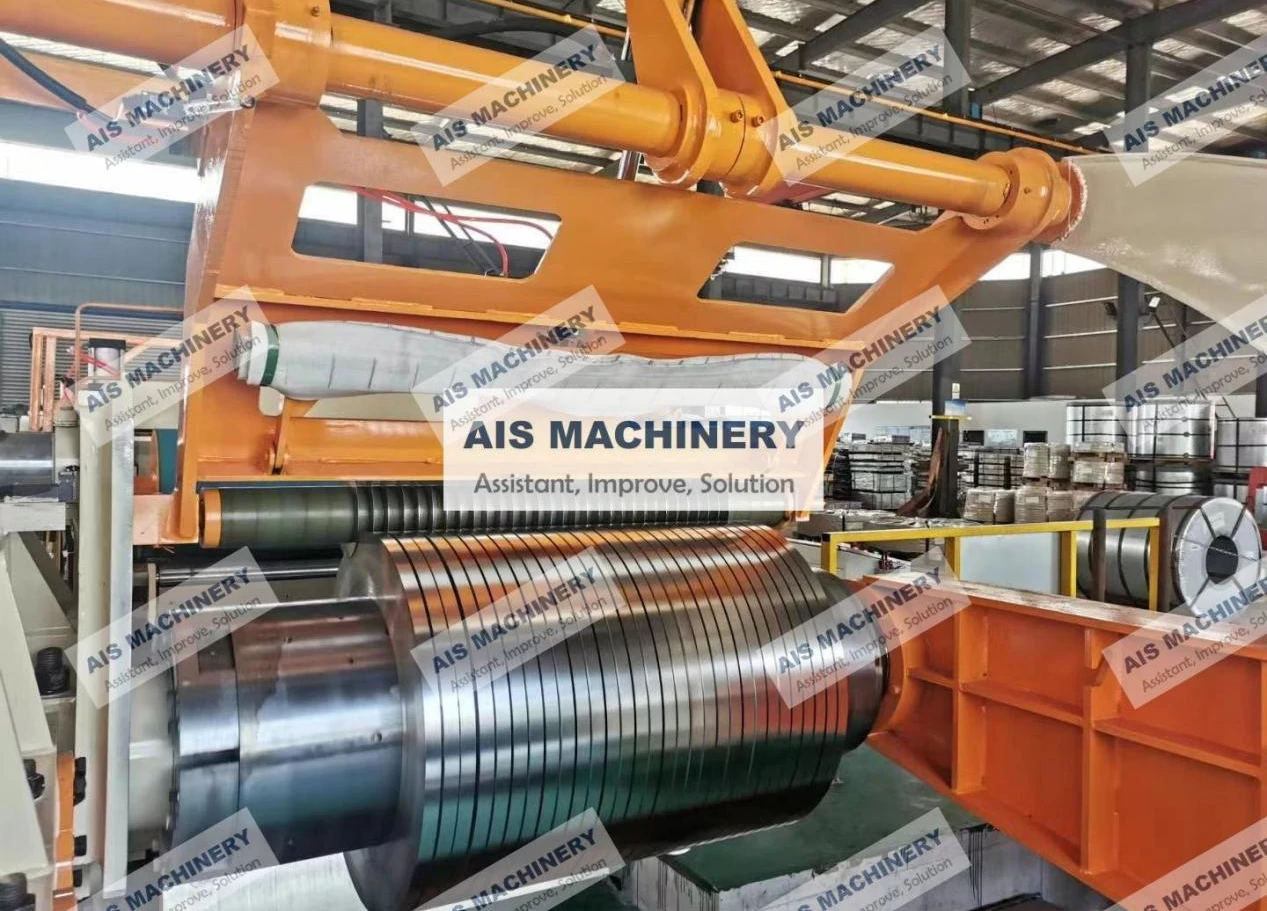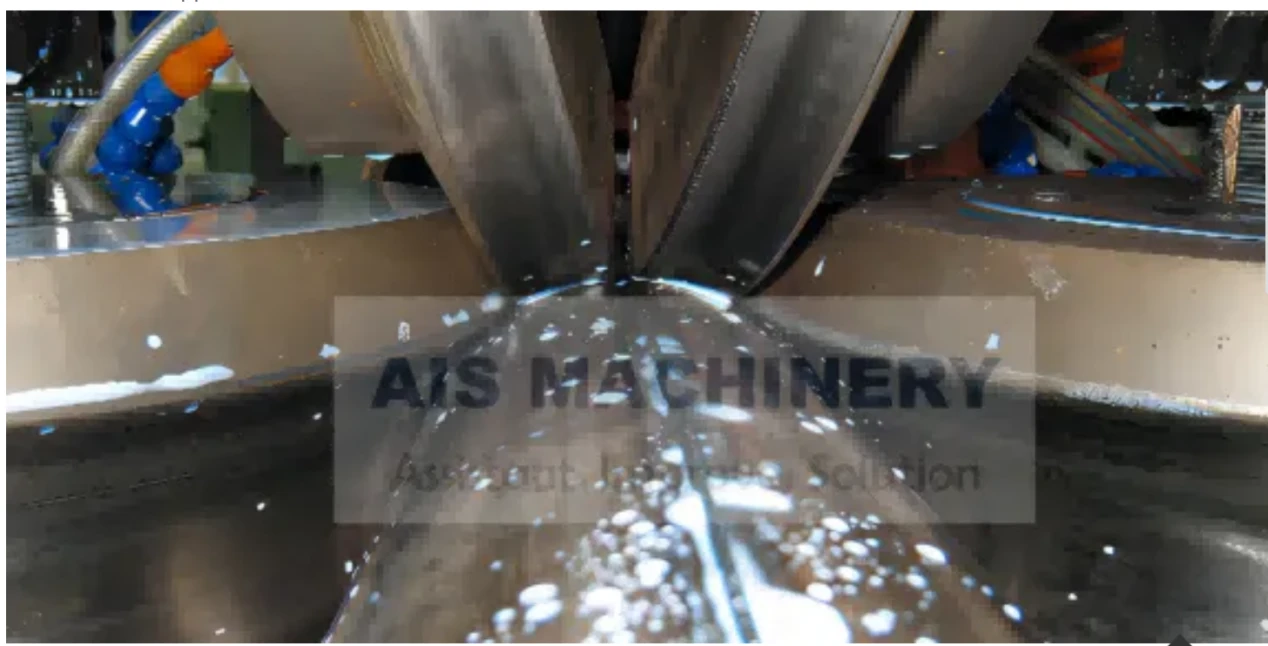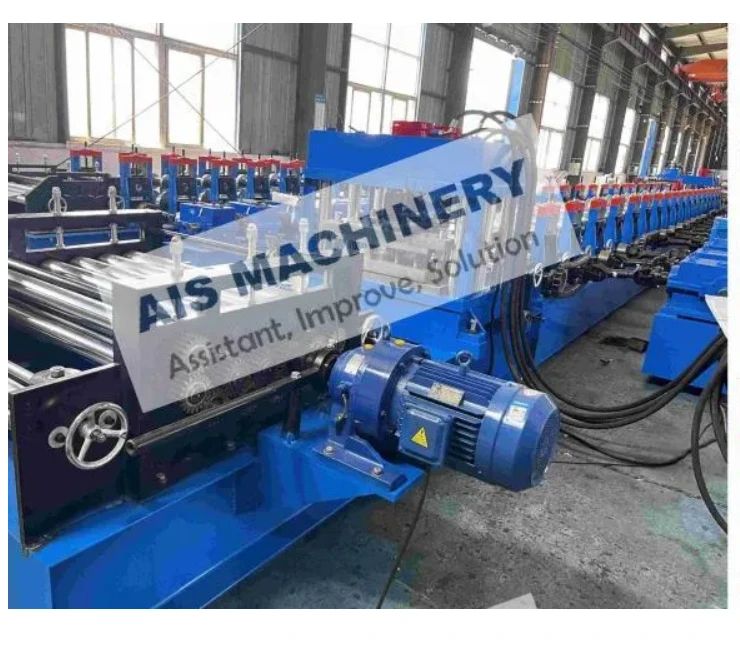-
 Tel:86-15176910262
Tel:86-15176910262
-

Search


High-Efficiency Induction Heating Machines for Industrial Use
Ago . 07, 2025 07:00
In the rapidly evolving landscape of industrial manufacturing, the demand for efficiency, precision, and sustainability has never been greater. At the forefront of meeting these demands is the **induction heating machine**, a technology that has revolutionized countless thermal processing applications. From critical heat treatments in aerospace and automotive industries to precise annealing processes in metallurgy, induction heating offers unparalleled advantages over traditional methods. This comprehensive guide delves into the core aspects of this pivotal technology, exploring its industry trends, technical intricacies, diverse applications, and the strategic advantages it provides.
Industry Trends and Future Outlook for **Induction Heating Machine**
The global market for **induction heating machine** technology is experiencing robust growth, driven by several key factors: increasing automation in manufacturing, the imperative for energy efficiency, and the growing adoption of advanced materials that require precise thermal processing. According to a report by Grand View Research, the global induction heating market size was valued at USD 10.3 billion in 2022 and is projected to grow at a compound annual growth rate (CAGR) of 6.2% from 2023 to 2030. This growth is largely fueled by demand from the automotive, aerospace, and medical device sectors, which increasingly rely on induction heating for applications like hardening, brazing, melting, and annealing.
A significant trend is the push towards Industry 4.0 integration. Modern **induction heating machine** systems are now equipped with sophisticated sensors, IoT connectivity, and data analytics capabilities, allowing for real-time monitoring, predictive maintenance, and optimized process control. This not only enhances efficiency but also ensures higher product quality and reduces downtime. Furthermore, the focus on environmental sustainability is propelling the adoption of induction heating due to its clean operation, reduced emissions, and significantly lower energy consumption compared to gas-fired furnaces.
The miniaturization of components and the development of high-performance alloys also necessitate the precision offered by induction heating. As manufacturers strive for tighter tolerances and improved material properties, the ability of an **induction heating machine** to deliver localized, rapid, and controllable heat becomes indispensable. The market is also seeing innovations in coil design, power electronics, and control algorithms, further expanding the versatility and applicability of this technology across a wider range of industrial processes.
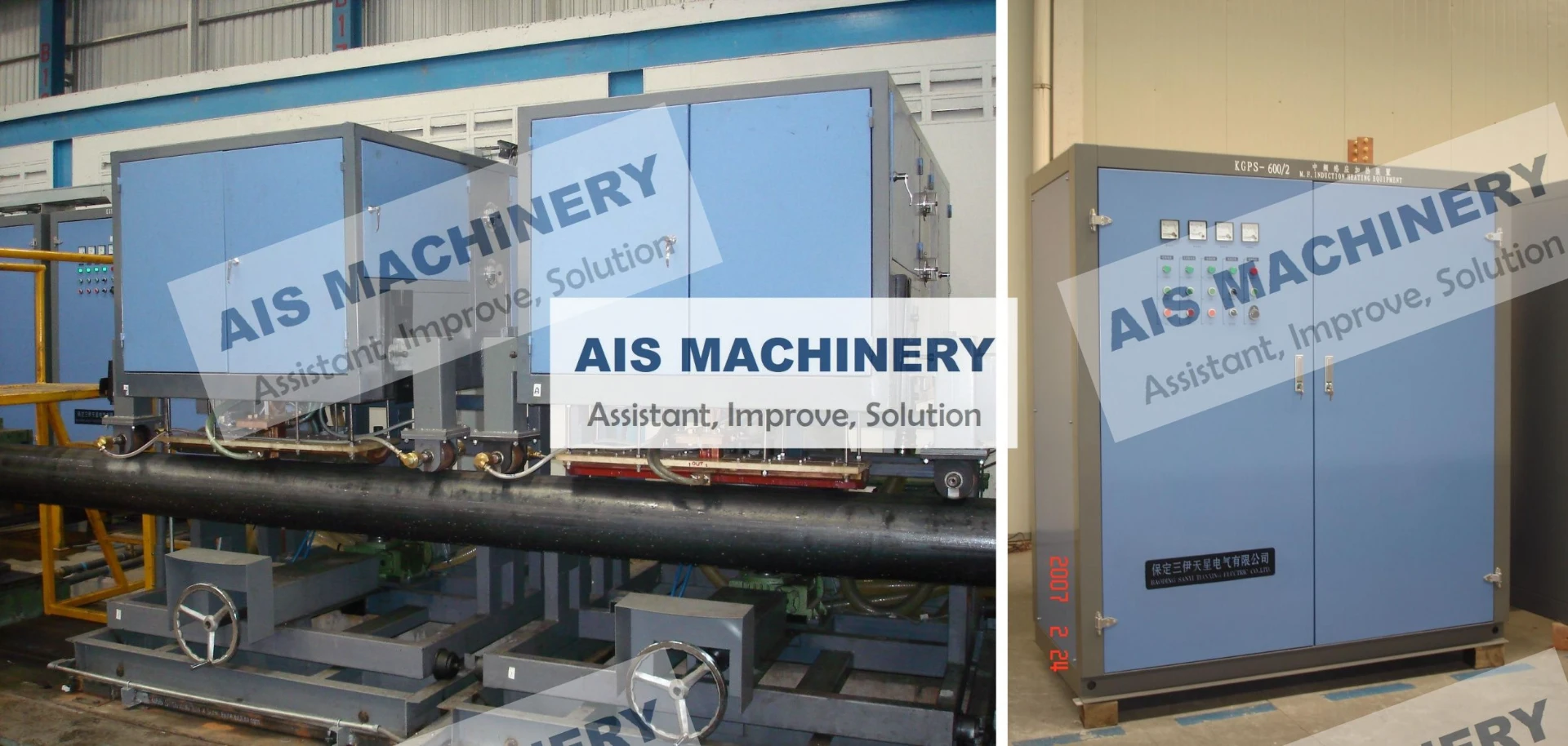
Understanding the Technical Parameters of an **Induction Heating Machine**
The performance and suitability of an **induction heating machine** for a specific application are determined by a range of critical technical parameters. Understanding these parameters is crucial for selecting or designing the optimal system:
- Power (kW): This denotes the total electrical power consumed by the system and directly correlates with the heating rate and the size/mass of the workpiece that can be heated. Higher power outputs are required for larger workpieces or faster heating cycles. Typical industrial machines range from a few kilowatts for brazing to several megawatts for large-scale melting or forging operations.
- Frequency (kHz): The operating frequency is perhaps the most critical parameter as it dictates the depth of heat penetration.
- Low Frequency (50 Hz - 10 kHz): Used for through-heating large workpieces, melting, forging, and applications requiring deep heat penetration. It typically produces coarser grain structures and is suitable for bulk heating.
- Medium Frequency (10 kHz - 100 kHz): Ideal for hardening, annealing, tempering, and brazing of medium-sized components. It offers a good balance between penetration depth and surface heating.
- High Frequency (100 kHz - 1 MHz+): Primarily used for surface hardening (case hardening), thin-walled components, small parts, and applications requiring very shallow heat penetration, such as welding and soldering. This range produces fine grain structures and minimal distortion.
- Coil Design: The induction coil (inductor) is custom-designed for the specific workpiece and heating pattern required. Factors include coil shape (helical, pancake, channel, hairpin), number of turns, conductor material (copper tubing, often water-cooled), and coupling distance to the workpiece. Optimized coil design ensures efficient energy transfer and uniform heating.
- Cooling System: As induction coils and power electronics generate significant heat, an efficient cooling system (typically water-cooled) is essential for continuous operation and longevity of the **induction heating machine**.
- Control System: Modern systems feature advanced digital control for precise temperature regulation, power modulation, cycle timing, and integration with automated production lines. PID (Proportional-Integral-Derivative) controllers are commonly employed for precise temperature management.
- Efficiency: Measured as the ratio of energy transferred to the workpiece versus total energy consumed. High-efficiency systems minimize energy waste. Modern solid-state inverters achieve efficiencies exceeding 90%.
Typical **Induction Heating Machine** Parameter Ranges
| Parameter | Range (Typical Industrial) | Application Examples | Benefit/Impact |
|---|---|---|---|
| Output Power | 10 kW - 2000 kW (and higher for specialized applications) | Brazing, Hardening, Forging, Melting | Determines heating speed & workpiece size capability |
| Operating Frequency | 0.5 kHz - 1000 kHz | Through-heating, Surface Hardening, Annealing | Controls heat penetration depth |
| Efficiency (Power Supply) | >90% | All applications | Reduces energy consumption & operating costs |
| Temperature Control Accuracy | ±5°C to ±15°C (depending on sensor/application) | Precise heat treatments (e.g., annealing, tempering) | Ensures metallurgical consistency & quality |
| Cooling Method | Closed-loop water cooling, air cooling | All applications | Ensures system longevity and stable operation |
| PLC/HMI Integration | Standard in modern systems | Automation, data logging, remote control | Facilitates Industry 4.0 readiness & ease of use |
| Workpiece Size Range | Millimeters (small components) to Meters (large pipes/billets) | Highly versatile | Adaptability to diverse manufacturing needs |
Diverse Application Scenarios of **Induction Heating Machine** Technology
The versatility of the **induction heating machine** makes it indispensable across a wide array of industries and applications:
- Heat Treatment: Hardening, tempering, annealing, normalizing, and stress relieving of metals to improve mechanical properties like strength, hardness, and ductility. Common in automotive components (crankshafts, gears), aerospace parts, and tool manufacturing.
- Brazing and Soldering: Joining two or more metal items by melting and flowing a filler metal into the joint. Offers clean, precise, and repeatable joints, crucial in HVAC, automotive, and electrical industries.
- Melting: Efficiently melting various metals and alloys in foundries for casting operations. Provides precise temperature control and uniform melting, reducing material waste.
- Forging and Forming: Rapidly heating metal billets or bars prior to forging or forming operations. The rapid, uniform heating minimizes scale formation and reduces energy consumption compared to conventional furnaces.
- Shrink Fitting: Heating a metal part (e.g., a gear, bearing) to expand it slightly so it can be fitted onto another component. Upon cooling, it shrinks to create a strong, interference fit.
- Curing and Drying: For non-metallic applications, induction can be used for curing coatings, drying adhesives, or processing composites.
Focus Application: Steel Pipe Seam Annealing with **Induction Heating Machine**
A prime example of the precision and efficiency of **induction heating machine** technology is its application in the annealing of steel pipe seams. Our product, the Steel pipe seam annealing machine, is specifically designed for this critical process.
Annealing is a heat treatment process that alters the microstructure of a material to increase its ductility, reduce hardness, and make it more workable. For welded steel pipes, the heat-affected zone (HAZ) along the weld seam can become brittle due to rapid cooling during welding. Annealing the seam after welding is vital to:
- Restore Ductility: Improve the material's ability to deform plastically without fracturing, which is essential for subsequent forming operations or to prevent brittle failure in service.
- Reduce Residual Stress: Welding introduces significant residual stresses. Annealing helps relieve these stresses, preventing distortion and improving fatigue life.
- Homogenize Microstructure: Refine the grain structure and ensure uniform metallurgical properties across the weld seam and adjacent material.
- Enhance Corrosion Resistance: A more uniform and refined microstructure can improve resistance to certain types of corrosion, particularly in harsh environments.
The Steel pipe seam annealing machine precisely heats only the weld seam area using an induction coil, leaving the rest of the pipe relatively cool. This localized heating saves immense amounts of energy compared to heating the entire pipe in a conventional furnace and prevents undesirable changes to the pipe's overall properties.
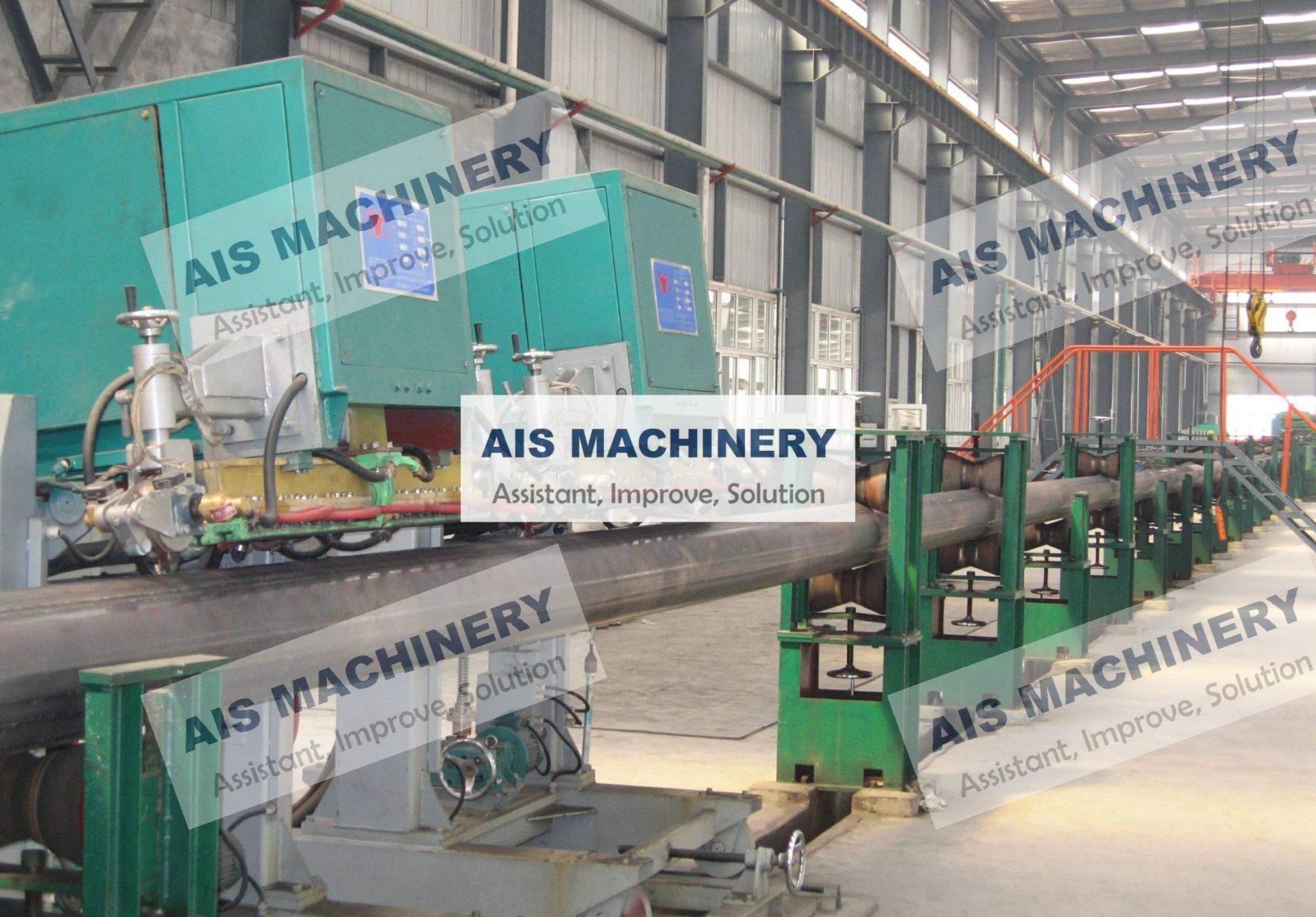
Technical Advantages of **Induction Heating Machine**
Compared to traditional heating methods (e.g., gas furnaces, resistance heating), the **induction heating machine** offers a multitude of compelling advantages that translate directly into operational efficiencies, cost savings, and superior product quality:
- Energy Efficiency: Induction heating directly heats the workpiece by inducing currents within it, minimizing heat loss to the surroundings. This results in significantly higher energy efficiency (often >90%) compared to conventional furnaces that heat the surrounding air. For the Steel pipe seam annealing machine, this means only the precise area of the weld is heated, leading to substantial energy savings.
- Precision and Control: The ability to precisely control power, frequency, and time allows for extremely accurate temperature control and heating patterns. This ensures uniform heating and consistent metallurgical results, crucial for critical applications like pipe seam annealing where specific temperature profiles are required for optimal ductility and stress relief.
- Speed: Induction heating is exceptionally fast, as heat is generated directly within the material. This rapid heating capability reduces cycle times significantly, boosting production throughput.
- Safety: There is no open flame, combustion products, or radiant heat from a furnace, making induction heating a safer working environment. The system generates heat only within the workpiece and the coil itself remains relatively cool, reducing risks of burns and fires.
- Clean Operation: As an electric process, induction heating is environmentally friendly, producing no direct emissions, smoke, or excessive noise. This contributes to a cleaner factory floor and reduces the need for extensive ventilation systems.
- Localized Heating: Heat can be precisely targeted to a specific area of the workpiece, leaving adjacent areas unaffected. This is particularly advantageous for applications like seam annealing where only the weld zone requires treatment, preserving the properties of the rest of the pipe.
- Reduced Material Distortion & Grain Growth: Rapid and localized heating minimizes overall heat input to the part, reducing distortion and preventing undesirable grain growth in other sections of the material.
- Scalability & Automation: Induction heating systems are highly adaptable and can be easily integrated into automated production lines, offering seamless scalability for various production volumes.
Manufacturer Comparison and Choosing the Right **Induction Heating Machine** Provider
Selecting the right **induction heating machine** manufacturer is a strategic decision that impacts the long-term performance, reliability, and cost-effectiveness of your operations. When evaluating providers, consider the following key aspects:
- Experience and Specialization: Look for manufacturers with extensive experience in induction heating technology, particularly in your specific application area (e.g., tube and pipe manufacturing for seam annealing). A company with a long history (e.g., 20+ years in the industry) demonstrates stability and deep knowledge.
- Technological Innovation: Assess their R&D capabilities and commitment to incorporating the latest advancements in power electronics, control systems, and coil design. Do they offer cutting-edge solutions like IGBT-based inverters or advanced PLC integration?
- Customization Capabilities: Standard machines might not always fit unique production requirements. A good manufacturer should offer flexible solutions, capable of designing custom coils, handling systems, and integration with existing lines.
- After-Sales Support and Service: This is paramount. Enquire about their warranty policies, availability of spare parts, technical support, training programs, and on-site service. A robust global service network can be a significant advantage.
- Quality and Certifications: Verify their adherence to international quality standards such as ISO 9001. Check for product certifications (e.g., CE, UL) where applicable. Our products, including the Steel pipe seam annealing machine, adhere to stringent quality control, including ISO 9001 and ANSI standards for components, ensuring reliability and performance.
- Customer References and Track Record: Ask for customer testimonials or case studies, especially from companies in similar industries. A strong portfolio of successful installations speaks volumes about a manufacturer's reliability.
- Cost-Effectiveness (Total Cost of Ownership): While initial purchase price is a factor, consider the total cost of ownership, which includes energy efficiency, maintenance costs, expected service life, and potential downtime. A more expensive but highly efficient and reliable system can yield significant savings over its lifespan.
We pride ourselves on being a trusted partner, offering not just advanced **induction heating machine** solutions like our Steel pipe seam annealing machine, but also comprehensive support and expertise built over years of serving the global industry.
Custom Solutions and Application Case Studies
One of the core strengths of modern **induction heating machine** technology lies in its adaptability to highly specific industrial needs. While standard models cater to common applications, many manufacturing processes demand tailored solutions to achieve optimal results. This involves a collaborative approach where our engineers work closely with clients to understand their unique material properties, desired thermal profiles, production throughput, and integration requirements.
The customization process typically involves:
- Detailed Consultation: Understanding the client's process, material, part geometry, and desired metallurgical outcome.
- Feasibility Study & Simulation: Using advanced simulation software (e.g., finite element analysis - FEA) to model heat distribution, electromagnetic fields, and material response, ensuring the proposed solution will meet specifications.
- Custom Inductor Design: Developing a unique coil geometry optimized for uniform heating, energy efficiency, and fit within the production line. This is paramount for specialized applications like the Steel pipe seam annealing machine, where the coil must precisely target the weld seam.
- Power Supply Configuration: Selecting the appropriate power output and frequency range to achieve the required temperature and heating rate for the specific material and application.
- Automated Handling Systems: Designing bespoke material handling solutions (robots, conveyors, manipulators) to seamlessly integrate the **induction heating machine** into existing production lines, maximizing automation and safety.
- Integrated Control Systems: Developing intuitive human-machine interfaces (HMIs) and programmable logic controller (PLC) programs for precise process control, data logging, and connectivity with factory management systems.
Application Case: Enhanced Ductility in Large Diameter Pipe Production
A leading steel pipe manufacturer approached us with a challenge: their large-diameter welded pipes, used in high-pressure oil and gas pipelines, exhibited inconsistent ductility in the weld HAZ, leading to potential field failures. Traditional batch furnace annealing was energy-intensive and often caused pipe distortion due to full-body heating.
Our solution involved designing a custom **induction heating machine** specifically for continuous seam annealing. The system featured:
- A specialized, multi-turn "U-shaped" induction coil designed to precisely encompass and heat only the longitudinal weld seam of pipes ranging from 16 to 48 inches in diameter.
- A medium-frequency (25 kHz) power supply to ensure sufficient penetration depth for the thick-walled pipes while maintaining localized heating.
- An integrated optical pyrometer feedback system for real-time temperature monitoring and closed-loop control, ensuring the HAZ reached the precise annealing temperature (typically 700-900°C for carbon steel) and holding it for the required duration.
- A custom roller-conveyor system that allowed continuous passage of pipes through the induction coil at production line speeds.
Results: The client observed a significant improvement in HAZ ductility (verified by charpy impact tests and tensile strength analysis), meeting stringent API 5L and ASTM A53 standards. Energy consumption for annealing dropped by over 60% compared to previous methods, and line speed increased by 30%. The localized heating eliminated pipe distortion, drastically reducing scrap rates. This case exemplifies how a customized **induction heating machine** can deliver superior metallurgical properties, significant cost savings, and enhanced operational efficiency.
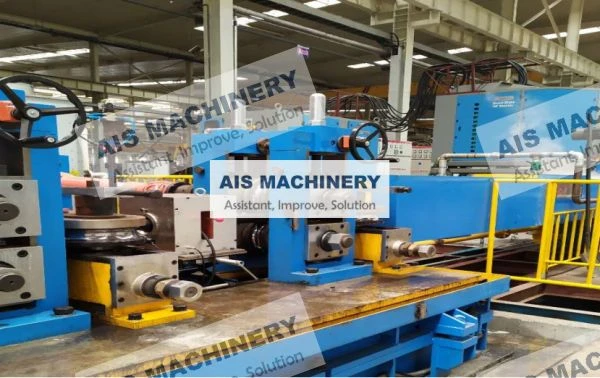
Process Flow of an **Induction Heating Machine** (with emphasis on Steel Pipe Seam Annealing)
The fundamental principle behind an **induction heating machine** involves electromagnetic induction. An alternating current (AC) is passed through an induction coil, creating a rapidly oscillating magnetic field. When a conductive workpiece is placed within this field, eddy currents are induced within the workpiece. The material's electrical resistance to these eddy currents generates heat (Joule heating), rapidly and efficiently heating the workpiece from within. The depth of heat penetration is determined by the frequency of the AC current.
For the Steel pipe seam annealing machine, the process flow can be visualized as a continuous, automated sequence:
- Pipe Entry & Alignment:
- Seamless or welded steel pipes (e.g., Carbon Steel, Stainless Steel, API Grade alloys) enter the annealing station on a conveyor system from the upstream welding or forming line.
- Precision guide rollers and alignment mechanisms ensure the pipe's longitudinal weld seam is perfectly centered relative to the induction coil. This is crucial for uniform heating of the HAZ.
(Imagine: Pipe enters, guided by rollers, arrow pointing to induction coil.)
- Induction Heating Zone:
- As the pipe passes through the specially designed, water-cooled induction coil, a high-frequency alternating current is applied to the coil.
- This generates a concentrated electromagnetic field that precisely induces eddy currents within the weld seam and its immediate heat-affected zone (HAZ).
- The resistance of the steel to these eddy currents causes rapid, localized heating of the seam to the precise annealing temperature (e.g., 750-850°C for carbon steel, depending on grade and desired properties).
- Advanced temperature sensors (e.g., infrared pyrometers) continuously monitor the seam temperature, providing real-time feedback to the **induction heating machine**'s control system.
(Imagine: Pipe moves through coil, radiating heat at seam, temperature sensor icon.)
- Soak Time (if applicable) & Controlled Cooling:
- Depending on the specific annealing recipe, the pipe may pass through a short "soak" zone (often a slightly extended coil or a controlled ambient cooling area) to allow the temperature to homogenize across the heated zone.
- Controlled cooling follows. For pipe annealing, this often involves ambient air cooling or controlled water mist/spray cooling to achieve the desired microstructure (e.g., pearlitic or ferritic-pearlitic structure for enhanced ductility and reduced hardness).
(Imagine: Heated pipe exits coil, enters cooling section, cooling fan/water spray icon.)
- Pipe Exit & Quality Control:
- The annealed pipe exits the station, ready for subsequent processing steps such as sizing, straightening, or inspection.
- Post-annealing quality checks include visual inspection for uniform color, hardness testing (e.g., Rockwell, Brinell), metallurgical analysis (microstructure, grain size), and sometimes ultrasonic testing (UT) or eddy current testing (ECT) to confirm integrity and properties of the HAZ.
(Imagine: Cooled pipe exits, quality control station icon.)
Product Material & Manufacturing: The Steel pipe seam annealing machine itself is constructed using high-grade industrial materials. Its power supply units typically utilize robust, high-efficiency IGBT (Insulated Gate Bipolar Transistor) modules, ensuring stable power delivery and long service life. The induction coils are made from high-conductivity copper tubing, often silver-plated, precision-bent and brazed, then encapsulated in high-temperature insulating materials for durability and efficiency. Key structural components are manufactured from high-strength steel through precision CNC machining and robust welding, ensuring structural integrity and alignment accuracy for demanding industrial environments.
Inspection Standards: All critical components and the final assembly of our **induction heating machine** systems undergo rigorous quality control. We adhere to international standards such as ISO 9001 for quality management systems. Furthermore, individual components and electrical systems comply with relevant industry safety and performance standards like ANSI (American National Standards Institute) and CE (Conformité Européenne) directives where applicable. Performance testing includes power output stability, frequency accuracy, cooling system efficiency, and functional testing under simulated load conditions before shipment.
Service Life & Applicable Industries: A well-maintained **induction heating machine** typically boasts a service life of 15-25 years or even longer. Our Steel pipe seam annealing machine is specifically designed for continuous, heavy-duty operation in demanding environments. It finds critical applications across a spectrum of industries:
- Petrochemical Industry: For pipes conveying oil, gas, and chemical products, requiring high integrity and ductility to withstand pressure and corrosive environments.
- Metallurgy & Steel Production: Integral to the manufacturing of various steel pipes, tubes, and profiles, enhancing their mechanical properties.
- Water Supply & Drainage Infrastructure: For large-diameter pipes used in municipal water distribution and wastewater systems, where long-term durability and resistance to stress are crucial.
- Construction & Structural Engineering: For structural hollow sections and piles where weld integrity and material strength are paramount.
Advantages in Typical Application Scenarios (Energy Saving & Corrosion Resistance): In the context of petrochemical and water supply industries, the **induction heating machine** for seam annealing offers distinct advantages:
- Significant Energy Saving: By precisely heating only the weld seam of the pipe, our machine drastically reduces the energy consumption compared to heating the entire pipe in a conventional furnace. This translates directly to lower operating costs and a smaller carbon footprint, which is increasingly important for large-scale industrial operations aiming for sustainability. Independent studies have shown up to 70% energy savings in localized heat treatment applications compared to batch furnaces.
- Enhanced Corrosion Resistance: While annealing primarily improves ductility and relieves stress, the refined and homogenized microstructure in the HAZ resulting from precise induction annealing can indirectly improve resistance to certain types of corrosion, particularly stress corrosion cracking (SCC). By eliminating localized stress concentrations and promoting a more uniform grain structure, the material becomes less susceptible to attack in aggressive environments, which is critical for pipes in the oil & gas and chemical sectors.
Trustworthiness and Customer Support
Our commitment extends beyond delivering cutting-edge **induction heating machine** solutions. We believe that true partnership is built on trust, transparency, and unwavering support. Our dedication to trustworthiness (T in EEAT) is reflected in our robust policies and customer-centric approach:
Quality Assurance & Certifications
Our manufacturing processes adhere to the strictest quality standards. We are an ISO 9001 certified company, ensuring that every stage from design and material sourcing to manufacturing and final testing meets international benchmarks for quality management. Our products, including the Steel pipe seam annealing machine, are designed and built to comply with relevant safety and performance standards such as CE, and applicable ANSI/NEMA standards for electrical and mechanical components, guaranteeing reliable and safe operation.
Warranty & After-Sales Service
We provide a comprehensive warranty for all our **induction heating machine** products, typically ranging from 12 to 24 months, covering manufacturing defects and operational failures under normal use. Our dedicated after-sales service team is available globally, offering prompt technical support, troubleshooting, and spare parts supply. We understand that downtime can be costly, so our goal is to resolve issues quickly and efficiently to ensure your operations run smoothly.
Delivery Cycle & Installation
The typical delivery cycle for a standard **induction heating machine** ranges from 8 to 16 weeks, depending on customization requirements and current production load. For highly customized solutions like advanced Steel pipe seam annealing machine systems, the lead time may extend to 18-24 weeks due to extensive design, engineering, and testing phases. We provide detailed installation manuals and offer on-site installation supervision and commissioning services by our experienced engineers to ensure seamless integration into your existing production line and optimal performance from day one.
Customer Feedback & Service Cases
Customer Testimonial: Pipe Manufacturer, Texas, USA
"Integrating [Our Company's] Steel pipe seam annealing machine into our production line was a game-changer. The precision in annealing the weld seams of our high-strength steel pipes has dramatically improved their ductility and reduced rework. The system is incredibly reliable, and their technical support team is top-notch. We’ve seen a 35% reduction in energy costs for this process, which is a substantial saving."
— Production Manager, Leading Pipe Mill
Service Case: Proactive Maintenance for Global Client
A client operating a critical **induction heating machine** for automotive component hardening in Germany requested a routine preventive maintenance check. Our local service engineer identified a minor anomaly in the cooling system pressure. Through proactive intervention and a small component replacement, potential overheating and costly unscheduled downtime were averted. This incident highlights our commitment to proactive customer support and minimizing operational disruptions.
Frequently Asked Questions (FAQ) about **Induction Heating Machine** Technology
Q1: What is the main difference between an **induction heating machine** and a traditional furnace?
A: The primary difference lies in the heating mechanism. Traditional furnaces heat the workpiece indirectly by radiating heat from heated elements or combustion gases. An **induction heating machine** heats the workpiece directly from within by inducing eddy currents, resulting in faster, more energy-efficient, and highly localized heating. This direct heating minimizes heat loss to the environment and allows for much finer control over the heating process.
Q2: What materials can be heated by an **induction heating machine**?
A: Induction heating works best with electrically conductive materials, primarily metals such as steel (carbon steel, stainless steel, alloy steel), copper, aluminum, brass, and titanium. Non-conductive materials like plastics or ceramics cannot be directly heated by induction, though they can be heated indirectly by placing them in contact with a heated conductive susceptor.
Q3: How is the service life of an **induction heating machine** influenced?
A: The service life, typically 15-25 years, is primarily influenced by proper maintenance, consistent adherence to operating parameters, and the quality of components. Regular cleaning of cooling systems, inspection of induction coils for wear, and prompt replacement of consumables are crucial. Overloading the machine or operating it outside its specified parameters can significantly reduce its lifespan.
Q4: What are the typical installation standards for a large-scale **induction heating machine**?
A: Installation typically follows national and international electrical codes (e.g., NFPA 70 in the USA, IEC standards globally). Key considerations include robust electrical power supply connections (often three-phase industrial power), adequate cooling water supply and return lines, proper grounding, and safety interlocks. Mechanical installation involves securing the machine, aligning work-handling systems, and ensuring proper ventilation. Our engineers provide detailed installation guides and can offer on-site supervision.
Q5: Can an **induction heating machine** be integrated into an existing automated production line?
A: Absolutely. Modern **induction heating machine** systems are designed for seamless integration. They typically feature PLC (Programmable Logic Controller) compatibility, allowing them to communicate with central factory automation systems via various industrial protocols (e.g., Ethernet/IP, Profinet, Modbus TCP). This enables automated loading/unloading, real-time process control, data logging, and remote monitoring.
Q6: What specific benefits does the Steel pipe seam annealing machine offer for ductility and stress relief?
A: The Steel pipe seam annealing machine uses precise localized induction heating to transform the brittle microstructure in the weld heat-affected zone (HAZ) into a more ductile, refined grain structure. This process effectively relieves residual stresses introduced during welding, preventing potential cracking and distortion, and significantly improving the pipe's overall mechanical properties and suitability for demanding applications in industries like oil and gas.
Q7: How does an **induction heating machine** contribute to environmental sustainability?
A: Induction heating is inherently environmentally friendly. It is an electric process, meaning no direct combustion emissions (like CO2, NOx) are produced on-site. Its high energy efficiency (typically >90%) significantly reduces overall energy consumption compared to fossil-fuel-fired furnaces. Furthermore, the localized heating minimizes heat wasted into the environment, contributing to a cooler and safer work environment and reducing the overall carbon footprint of manufacturing operations.
The strategic adoption of advanced manufacturing technologies, particularly the **induction heating machine**, is paramount for companies aiming to enhance productivity, improve product quality, and achieve sustainability goals. Its precision, speed, efficiency, and environmental benefits position it as a cornerstone technology for modern industrial thermal processing, driving innovation across diverse sectors from automotive to large-scale pipe manufacturing.
References & Further Reading:
- Grand View Research. (2023). Induction Heating Market Size, Share & Trends Analysis Report By Product, By Application, By Region, And Segment Forecasts, 2023 - 2030. Available at: https://www.grandviewresearch.com/industry-analysis/induction-heating-market
- ASM International. (n.d.). Heat Treating Fundamentals. ASM Handbook, Volume 4A: Steel Heat Treating Fundamentals and Processes. Available in academic databases or via ASM International publications.
- Rudnev, V. (2017). Handbook of Induction Heating. CRC Press. (A comprehensive academic reference on induction heating principles and applications.)
- Journal of Materials Processing Technology. (Various Articles on Induction Heat Treatment). Available via scientific databases such as ScienceDirect or IEEE Xplore. Example: https://www.sciencedirect.com/journal/journal-of-materials-processing-technology
Related Products
Related News
Send a Message
Dear customer, thank you for your attention! We provide high-quality machinery and equipment and look forward to your orders. Please inform us of your needs and we will respond quickly!

